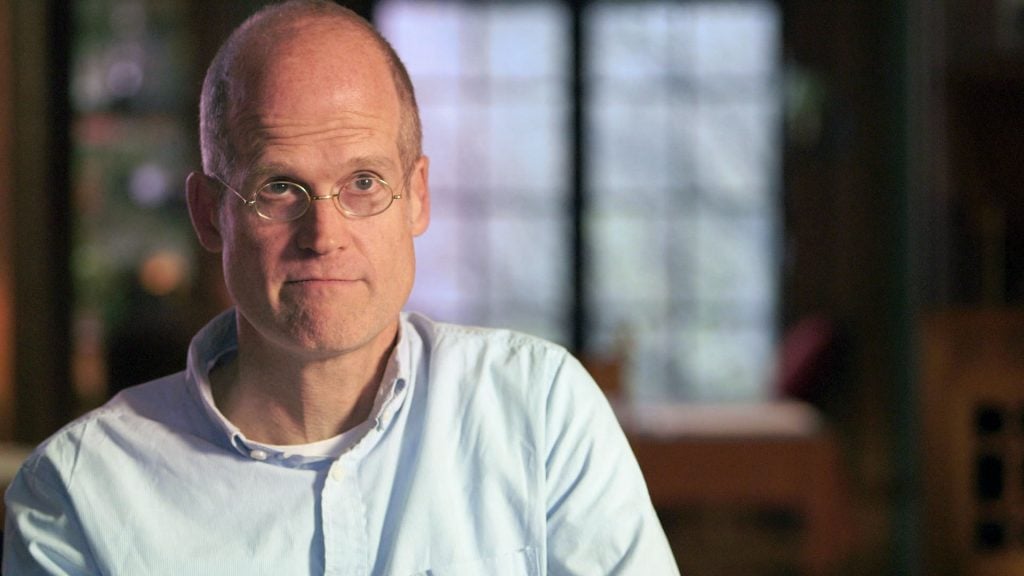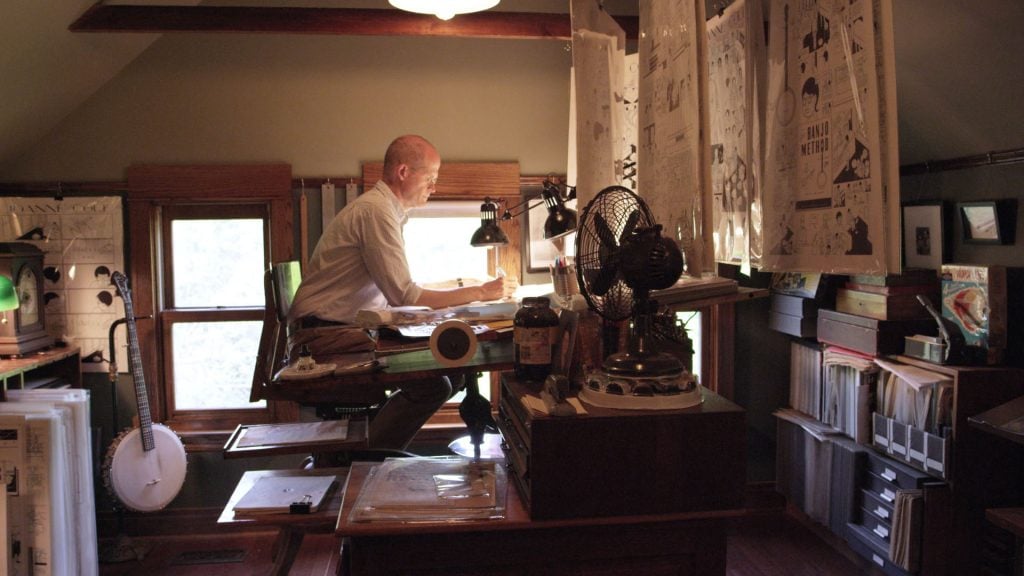Art World
‘It’s a Symbol System’: Watch Experimental Comics Artist Chris Ware Explain the Unique Artistic Rhythms of His Medium
As part of a collaboration with Art21, hear news-making artists describe their inspirations in their own words.

As part of a collaboration with Art21, hear news-making artists describe their inspirations in their own words.

Artnet News

Reading a single page of a comic book takes about 15 seconds. Creating it, on the other hand, takes 40 hours on average, according to artist and illustrator Chris Ware.
A new show on view at the Museum of Contemporary Art Chicago titled “Chicago Comics: 1960s to Now” traces the origins of the medium in the city, a creative hub that was the birthplace of serialized comic strips. Chris Ware, known for Jimmy Corrigan, the Smartest Kid on Earth (2000) and other works, is among the local artists spotlighted by the MCA who have stretched the artistic possibilities of comics in thoughtful ways.
In an exclusive interview with Art21 filmed as part of the “Art in the Twenty-First Century” series, Ware describes the labor-intensive process of bringing his characters to life on the page. “Every strip, all the lettering that you see is all a product of my hand,” Ware explains, adding, “It’s not pictures with accompanying text. It’s a psychological process of reading pictures. It’s a symbol system.”
For a time, Ware says, he stopped using words in his comics altogether, because he wanted his drawings to convey all of the actions and emotions necessary on their own. “I was telling what happened rather than making it happen on the page,” he told Art21.
The idea of telling stories that are reflections of everyday life and experience is “endemic to Chicago,” the artist says, and it began with the likes of Charles Schultz and his work for the Chicago Tribune. Ware points to Charlie Brown, the lovable Peanuts character, as the “first empathetic cartoon character.” The hapless character, he explains, “really got to my heart.”
“I feel like I’m part of a tradition. The homeyness of the Chicago cartooning at that time appealed to me early on,” he says. It’s a strength of Chicago that makes it different than, for instance, New York City, which he describes as “a city of the one percent.”

Production still from the “Art in the Twenty-First Century” episode, “Chicago,” 2016. © Art21, Inc. 2016.
Of course, now, Ware is best known for his New Yorker magazine covers, as well as the wildly successful stories of Quimby the Mouse, Rusty Brown, and Jimmy Corrigan. One of Ware’s most personal projects was Building Stories, a box-set of 14 printed books in a range of formats including cloth-bound books, newspapers, and pamphlets, which can be read in any order. That work took him an entire decade to finish. The book follows the daily life of a girl living in Chicago, alternating between her memories of growing up and her current life.
“A book itself is the perfect metaphor for a human being,” Ware told Art21. “It’s got a front and a back. It’s got a spine, and it’s bigger on the inside than it is on the outside.”
Watch the video, which originally appeared as part of Art21’s Art in the Twenty-First Century series, below. Chris Ware’s work is on view as part of “Chicago Comics: 1960s to Now” at the Museum of Contemporary Art, Chicago through October 3, 2021.
This is an installment of “Art on Video,” a collaboration between Artnet News and Art21 that brings you clips of newsmaking artists. A new series of the nonprofit Art21’s flagship series Art in the Twenty-First Century is available now on PBS. Catch all episodes of other series like New York Close Up and Extended Play and learn about the organization’s educational programs at Art21.org